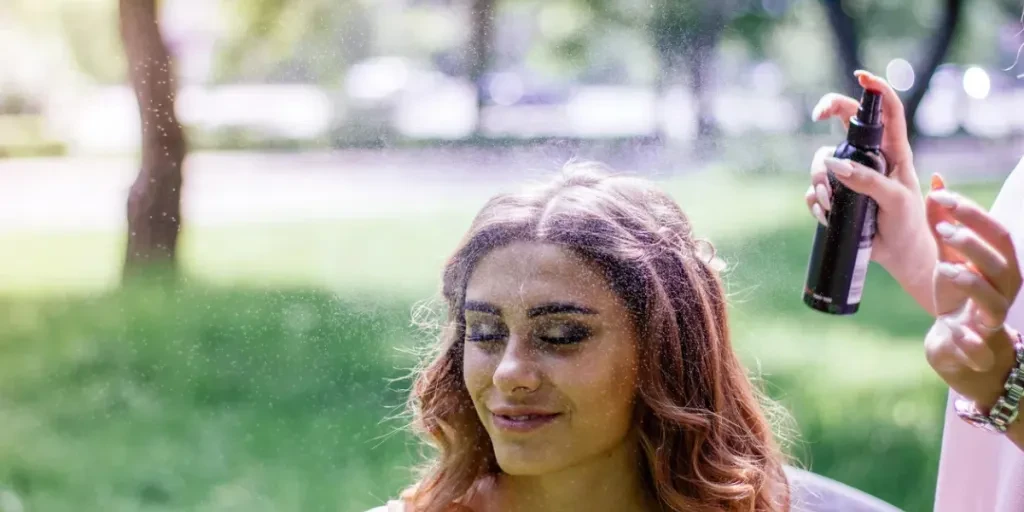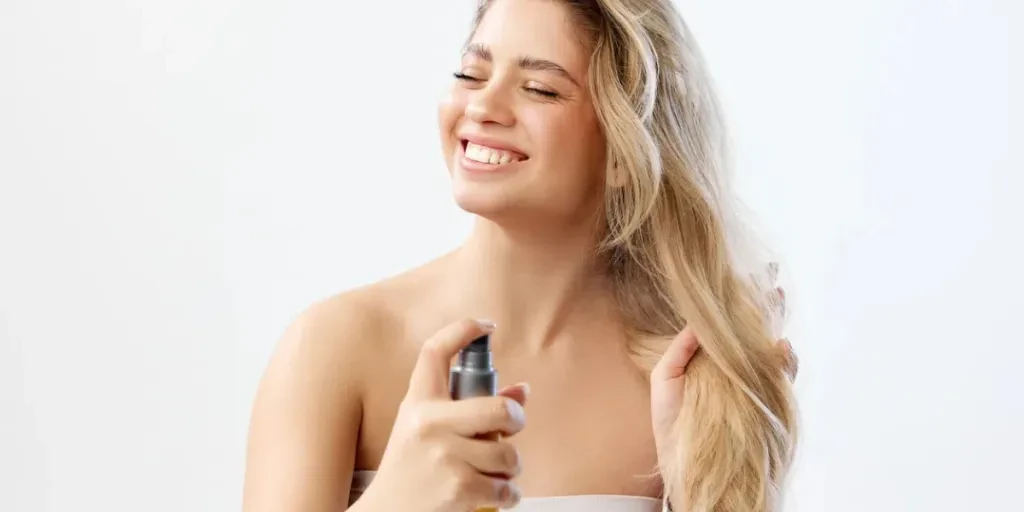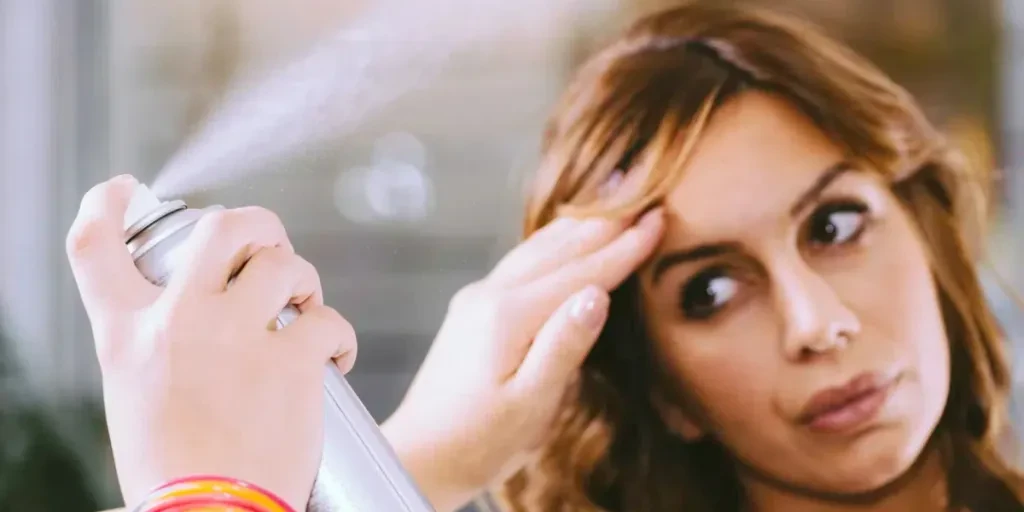Introduction: Understanding the Growing Demand for Heat Protectant Sprays
In the ever-evolving world of hair care, heat protectant sprays have emerged as a crucial product for maintaining hair health amidst the frequent use of styling tools. As we step into 2025, the demand for these sprays is skyrocketing, driven by a combination of consumer awareness, social media influence, and broader beauty trends. This guide delves into the market potential of heat protectant sprays, offering insights into why they are becoming indispensable in hair care routines.
Table of Contents:
– Exploring the Market Potential of Heat Protectant Sprays in 2025
– Diverse Types of Heat Protectant Sprays: Pros, Cons, and Consumer Insights
– Addressing Consumer Pain Points with Innovative Solutions
– Final Thoughts on Sourcing Heat Protectant Sprays for Business Buyers
Exploring the Market Potential of Heat Protectant Sprays in 2025

What Makes Heat Protectant Sprays a Must-Have in Hair Care?
Heat protectant sprays are designed to shield hair from the damaging effects of heat styling tools such as flat irons, curling wands, and blow dryers. These sprays form a protective barrier on the hair shaft, reducing moisture loss and preventing breakage. The rising popularity of at-home hair styling, coupled with the increasing awareness of hair health, has significantly boosted the demand for these products. According to a professional report, the global hair spray market, which includes heat protectant sprays, was valued at USD 10.49 billion in 2023 and is projected to reach USD 16.62 billion by 2029, growing at a CAGR of 8.03%. This growth is indicative of the expanding consumer base that prioritizes hair care and styling.
Social Media Trends and Hashtags Driving Popularity
Social media platforms, particularly Instagram and TikTok, have played a pivotal role in popularizing heat protectant sprays. Influencers and hair care professionals frequently showcase their styling routines, emphasizing the importance of using heat protectants to maintain hair health. Hashtags such as #HeatProtectant, #HairCareRoutine, and #HealthyHair have garnered millions of views, creating a buzz around these products. The visual appeal of before-and-after transformations and tutorial videos has made heat protectant sprays a staple in the beauty arsenals of many consumers. This trend is expected to continue, further driving the market growth.
Aligning with Broader Beauty and Personal Care Trends
The shift towards clean and sustainable beauty products is another factor contributing to the rising demand for heat protectant sprays. Consumers are increasingly seeking products that are free from harmful chemicals and environmentally friendly. Brands are responding by formulating heat protectant sprays with natural ingredients and eco-friendly packaging. This alignment with broader beauty trends not only caters to the growing consumer preference for clean beauty but also enhances brand loyalty and market penetration. Additionally, the emphasis on self-care and wellness has led to a surge in demand for products that offer both functional and therapeutic benefits, positioning heat protectant sprays as a key player in the hair care market.
In conclusion, the market potential for heat protectant sprays in 2025 is immense, driven by a combination of consumer awareness, social media influence, and alignment with broader beauty trends. As the demand for these products continues to grow, businesses in the beauty and personal care industry have a significant opportunity to capitalize on this trend by offering innovative and high-quality heat protectant sprays.
Diverse Types of Heat Protectant Sprays: Pros, Cons, and Consumer Insights

Silicone-Based vs. Natural Ingredients: What Buyers Need to Know
When sourcing heat protectant sprays, understanding the differences between silicone-based and natural ingredient formulations is crucial. Silicone-based sprays, such as those containing dimethicone or cyclopentasiloxane, are renowned for their ability to create a protective barrier around the hair shaft, reducing heat damage and enhancing shine. These sprays are particularly effective for high-heat styling tools like flat irons and curling wands. However, some consumers express concerns about potential buildup and the need for frequent clarifying shampoos to remove residues.
On the other hand, natural ingredient-based heat protectant sprays are gaining traction among eco-conscious consumers. Brands like Highland Style Co. utilize ingredients such as glacial clay and vegetable glycerin, which not only protect hair from heat but also nourish and hydrate it. These formulations appeal to consumers seeking clean beauty products free from silicones, parabens, and sulfates. While natural sprays may not provide the same level of heat protection as their silicone counterparts, they offer a gentler alternative for those with sensitive scalps or a preference for natural ingredients.
Effectiveness and Consumer Feedback: Key Insights
Effectiveness is a paramount consideration for business buyers when selecting heat protectant sprays. Consumer feedback often highlights the importance of a product’s ability to deliver on its promises of heat protection and hair health. For instance, Moxie’s Frizz Fighting Hair Serum, which includes SPF protection, has received positive reviews for its dual functionality in combating humidity and protecting against UV damage. This dual-purpose approach resonates with consumers living in regions with high humidity and intense sunlight.
Moreover, products like Swair’s SweatShield™ Leave-In Conditioning Spray have garnered attention for their sweat-proof properties, making them ideal for active individuals. This product’s ability to extend the time between washes while maintaining hair health despite daily pollution exposure is a significant selling point. Business buyers should consider such consumer insights to ensure they stock products that meet the evolving needs of their clientele.
Analyzing Ingredients: What Works Best for Different Hair Types
Different hair types require tailored heat protectant solutions to achieve optimal results. For fine hair, lightweight sprays that do not weigh down the hair are essential. Products like Kevin Murphy’s HAIR.RESORT.SPRAY, designed for fine hair, offer a natural, beachy texture without adding weight. Ingredients such as wheat amino acids and hydrolyzed silk enhance softness and shine, making them suitable for delicate hair types.
For curly and coily hair, moisture retention and frizz control are critical. Products like Curlsmith’s In-Shower Style Fixer, which provides lasting definition and shine for air- or blow-dried curls, are highly effective. These formulations often include hydrating ingredients like aloe vera and shea butter to maintain curl integrity and prevent dryness. Business buyers should prioritize products that cater to the specific needs of different hair types to ensure customer satisfaction and repeat purchases.
Addressing Consumer Pain Points with Innovative Solutions

Common Issues Faced by Users and How to Solve Them
Heat protectant sprays must address common consumer pain points such as heat damage, frizz, and product buildup. One prevalent issue is the damage caused by frequent use of high-heat styling tools. Products like CHI 44 Iron Guard Botanical Bliss Thermal Protection Spray, which offers hair-nurturing thermal protection with a weightless formula, are designed to mitigate this damage. Infused with sophisticated floral notes, this spray not only protects but also enhances the sensory experience, appealing to consumers who value both functionality and luxury.
Frizz control is another significant concern, especially in humid climates. Moxie’s Flexi Styling Serum Gel, which fights humidity and provides SPF protection, is an excellent example of a product that addresses this issue. Its formulation helps maintain smooth, frizz-free hair, making it a popular choice among consumers in monsoon-prone regions.
Innovations in Heat Protectant Sprays: What’s New?
The heat protectant spray market is witnessing several innovations aimed at enhancing product performance and consumer satisfaction. One notable trend is the incorporation of multifunctional benefits. For instance, Kopari’s Sunglaze Sheer Body Mist Sunscreen SPF 42 not only provides sun protection but also includes brightening Vitamin C, soothing Vitamin E, and moisturizing hyaluronic acid. This multifunctional approach appeals to consumers seeking comprehensive hair care solutions in a single product.
Another innovation is the development of heat-activated technologies. Shiseido’s Ultimate Sunscreen Protector Lotion SPF 60+ and Ultimate Sun Protector Spray SPF 40 utilize HeatForce Technology to enhance protection when exposed to heat, sweat, and water. This technology ensures that the product’s efficacy increases under high-temperature conditions, providing superior protection for consumers who frequently use heat styling tools.
Key Factors to Consider When Sourcing Heat Protectant Sprays
When sourcing heat protectant sprays, business buyers should consider several key factors to ensure they select products that meet consumer demands and regulatory standards. Ingredient safety is paramount, with a growing preference for formulations free from harmful chemicals such as sulfates, parabens, and phthalates. Products like Swair’s SweatShield™ Leave-In Conditioning Spray, which is vegan and cruelty-free, align with this trend and appeal to health-conscious consumers.
Packaging stability is another critical consideration. Products should be packaged in materials that preserve the integrity of the formulation and prevent contamination. Non-aerosol containers, like those used for Shiseido’s Ultra Sun Protector Spray SPF 40, are increasingly popular due to their environmental benefits and ease of use.
Adherence to local regulatory standards is essential to ensure compliance and avoid legal issues. Business buyers should verify that the products they source meet the safety and labeling requirements of their target markets. This includes ensuring that claims such as “”SPF protection”” or “”sweat-proof”” are substantiated by credible testing and certifications.
Final Thoughts on Sourcing Heat Protectant Sprays for Business Buyers

In conclusion, sourcing heat protectant sprays requires a thorough understanding of consumer preferences, ingredient safety, and regulatory compliance. By selecting products that address common pain points, incorporate innovative technologies, and cater to diverse hair types, business buyers can ensure they meet the evolving needs of their clientele. Prioritizing multifunctional benefits and eco-friendly formulations will further enhance product appeal and drive customer loyalty.




